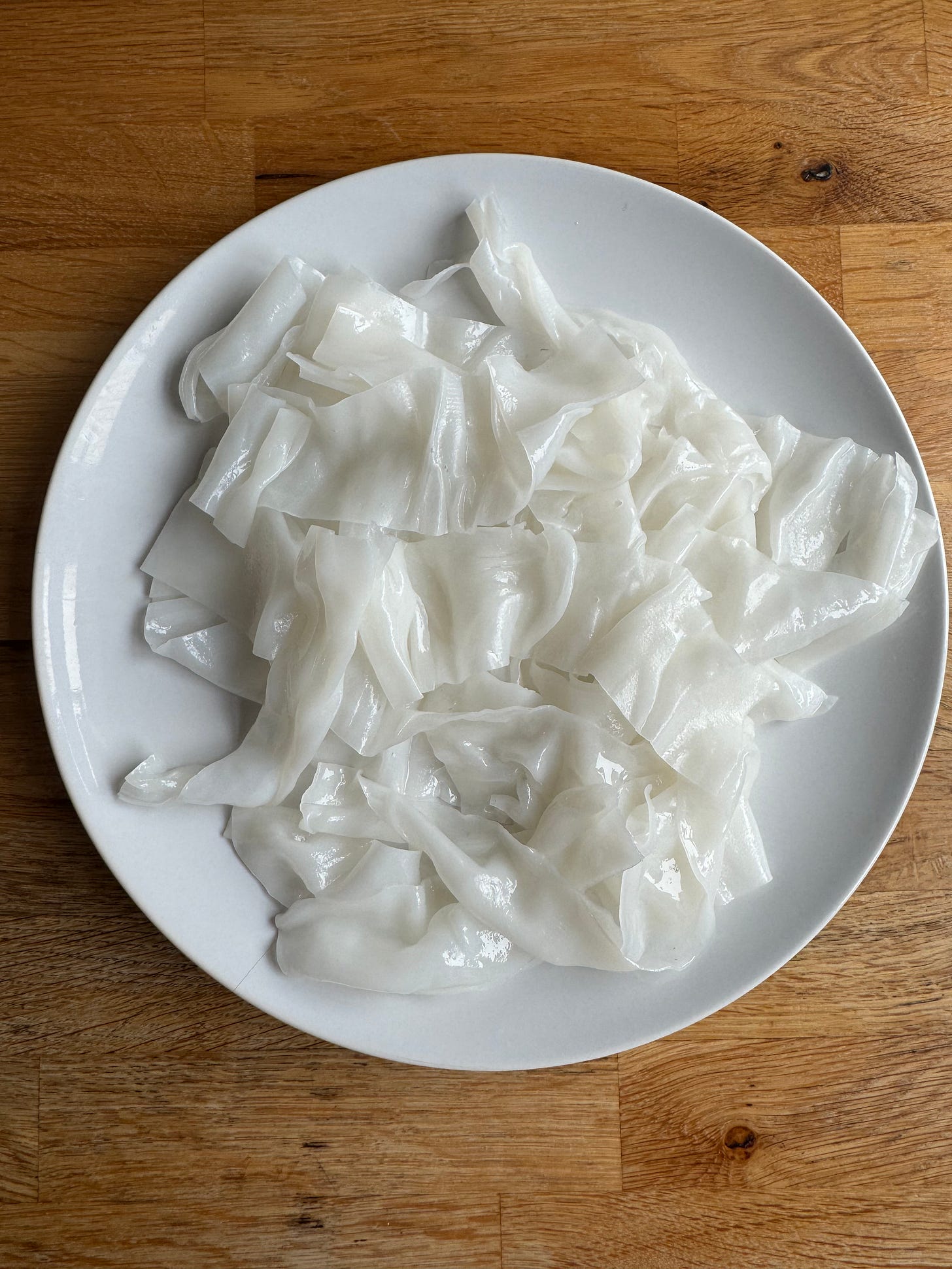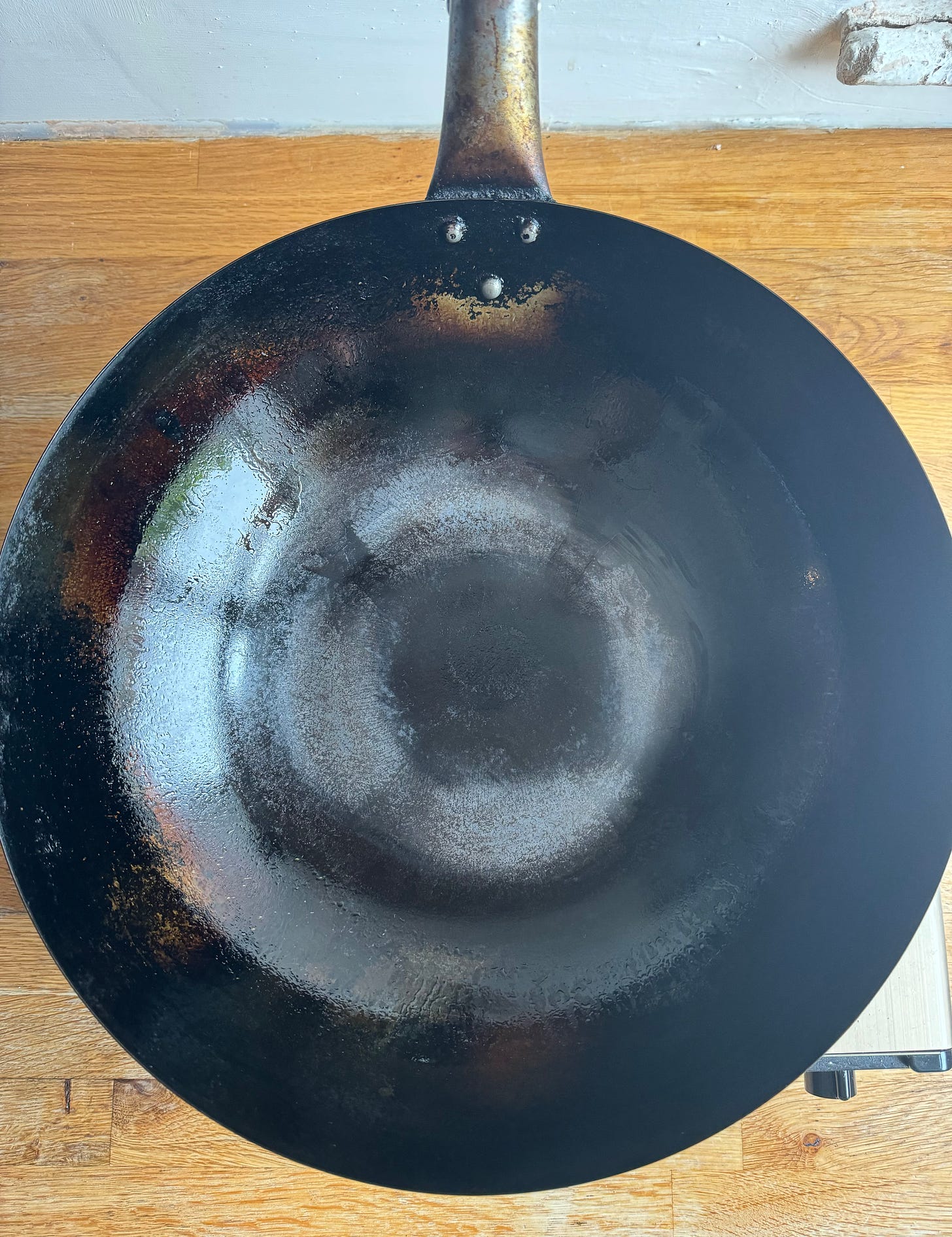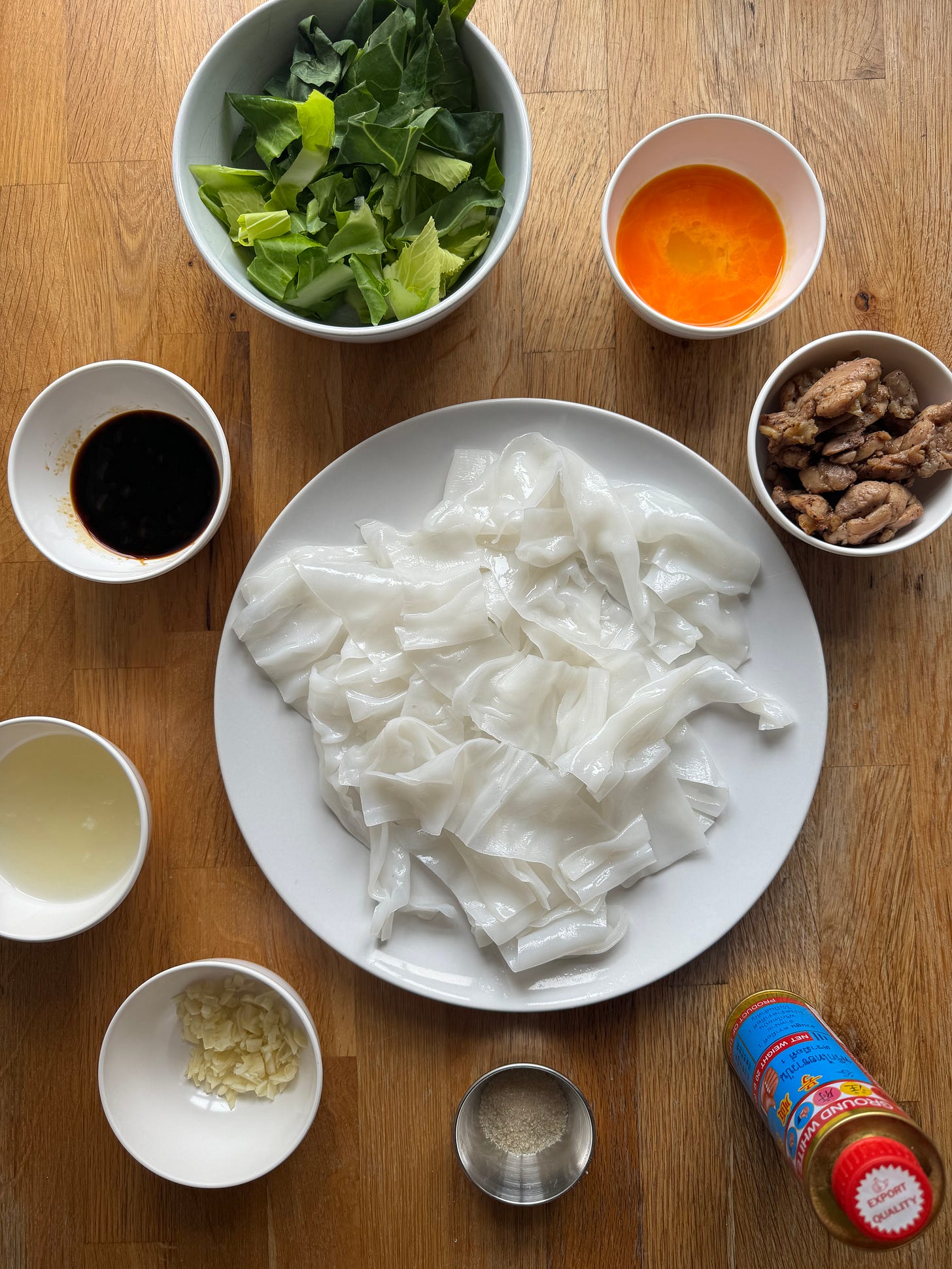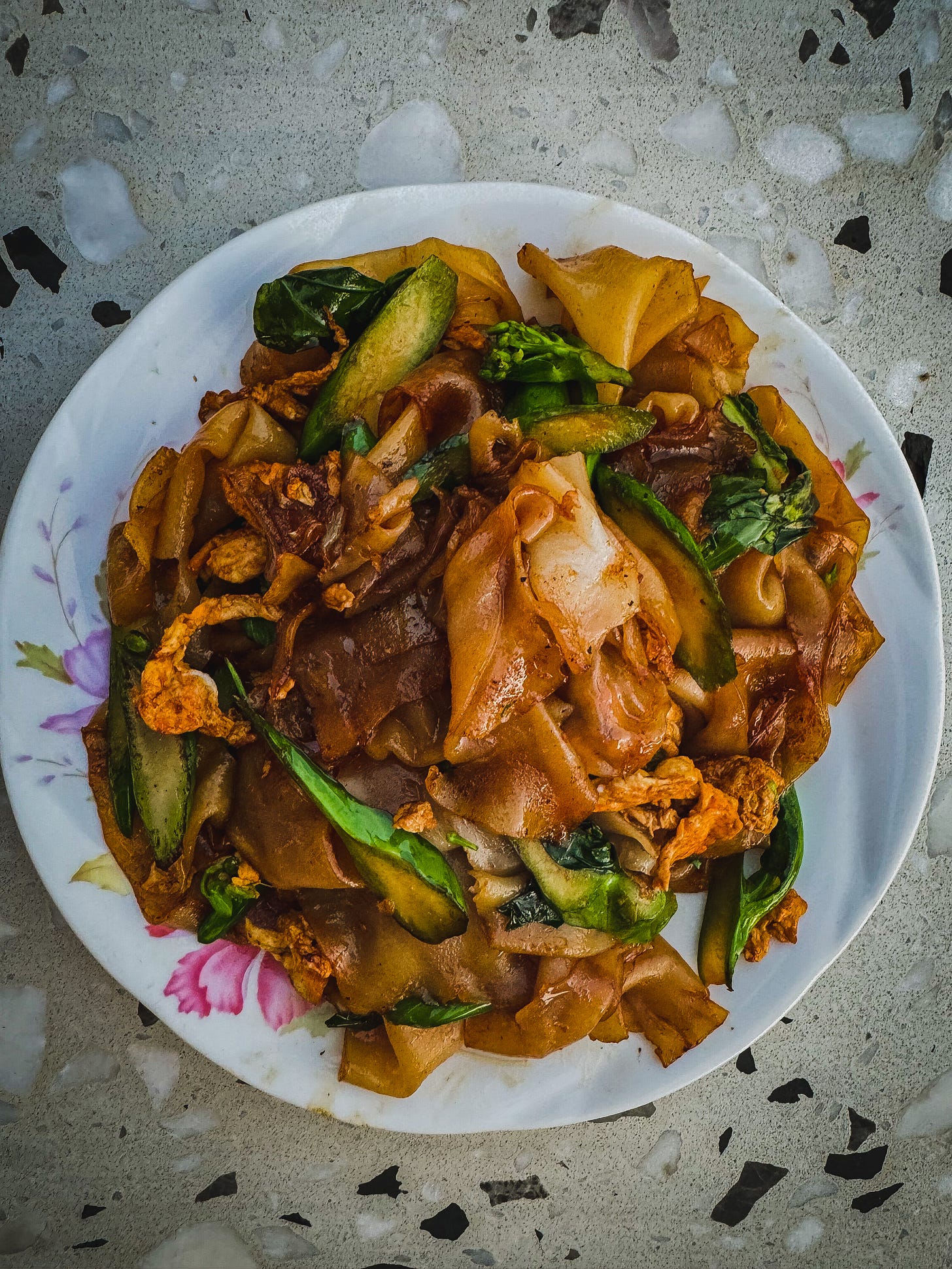Pad see ew may be the greatest noodle dish the world has ever seen. Unfortunately, here in the UK, it has not achieved the same cultural status as in Australia and the US, where it is a stalwart of many restaurants.
Many people ask me why Thai food. I'm not really sure of the answer. Pad see ew might be the reason. That's not entirely true, but it's not entirely false either. When people ask me why I like Thai food so much, I often say it's a combination of growing up in Sydney, which has great Thai food, and already being accustomed to the flavours and ingredients of SE Asian cuisines via my mum's Filipino cooking. That seems about right, more or less. Though if it were possible to examine the first part of that rationale, rather than finding a young me exploring the diversity of Thai food in my youth, you’d more likely find me gouging on pad see ew at every opportunity. Perhaps pad see ew really was the acorn that grew into the oak tree.
Pad see ew - the dish
Pad see ew is a Thai noodle dish of fresh wide rice noodles (sen yai in Thai) stir-fried with light and dark soy sauce, sugar, kai lan (Chinese broccoli), egg, and a protein, usually pork, chicken, or beef.
Like many noodle dishes in Southeast Asia, pad see ew has its roots in Chinese cuisine. It is said that migrants from Guangdong in southern China brought it to Bangkok in the early 20th century. In many ways, it is similar to chow fun, a Chinese dish that typically includes fresh rice noodles stir-fried with beef and soy sauces.
How to get this dish right at home
I have a chequered history with this dish. I have made it many times and failed many times. Wok cooking at home is difficult—it requires skill and repetition (and a well-seasoned wok).
There are two critical components, I have found, to making a good plate of pad see ew at home, and by good, I mean one which is on the road to being on par with something you’d find in Thailand and which is distinctly unlike most versions you will get here in the UK. The first is the quality of rice noodles. Every place I’ve had pad see ew in the UK has used dried rice noodles1 - i.e. the ones that you can find at your local Asian grocer, the type that keeps in your pantry indefinitely. Again, there’s a good reason for this. Fresh rice noodles are laborious to make, and they keep poorly. In my experience, they lose their vitality after a day. So for most restaurants - dried is the way to go. And make no mistake, you can make a tasty dish using dried noodles, but if you’re not hindered by the economics of running a restaurant, you’re willing to go out of the way to find ingredients, and you want to taste something similar to the real deal - fresh rice noodles are the way to go.
For my London people, lucky for you, you can find fresh rice noodles at Lo’s Noodle factory in Chinatown. It’s an institution that has been selling hor fun and cheung fun noodles (and Chinese buns) for god knows how long. Lo’s is situated in a grimy back alley near Gerrard Street. The factory itself is a little hole-in-the-wall operation with a couple of blokes hard at work manufacturing portion upon portion of freshly made rice noodles.
If and when you go, make sure to get the cheung fun noodles, which are sheets of rice noodles essentially (as they are meant for the Cantonese dish of the same name). You can then cut these into the appropriate sen yai size - around 6-7cm works.
The second component of making a good pad see ew is good technique. Wok cooking at home is hard (at least for me). After a lot of trial and error with this dish, I have found that the most important thing to making it home is having a well-seasoned wok2. Even though my wok has seen a lot action in its 7-year existence, I haven’t, until recently, been good at maintaining the seasoning. The thing is, if you cook anything with water in it (for longer than a few minutes), the seasoning can come off. And if any acid goes in there you’re kind of screwed. So extra care has to be made to re-season your wok if any of these things happen. Consideirng I make a lot of Thai stuff in the wok (water based curries, things with tamarind in them) I am constantly stripping the seasoning of it. When it came to making pad see ew (or similar noodle dishes), the noodles would often stick. A spatula would be needed to move them around (i.e. you couldn't swirl them around using the motion of the wok), and inevitably, I would end up with a dish of broken fragments of noodles. Not very luscious. Not very good. Anyway, now that I know, I always quickly re-season the old boy before giving it any noodle treatment. It takes a couple of mins3 and is well worth it.
The second most important thing - in regard to wok technique - is not overcrowding the wok. Just cook one serving at a time. Trust me on this. Who knows, you might be able to cook two portions, but it’s definitely harder, and you lose a lot of control. Picture this. Imagine trying to make 15 servings of pad see ew in one wok. What would that look like? The noodles would be so heavy, they would break everywhere. It would be difficult to incorporate the sauce so that the noodles are coated and seasoned. You’d have an extremely hard time trying to mix everything together. The heat of the wok would dissipate under the volume of contents, and you no doubt would end up with a gluggy, broken, bland and unseasoned mess. Now imagine cooking just half a serving. All of the noodles would be in contact with the blazing hot surface of the wok, you’d have oodles of surface area and space to toss them around using either a spatula or flicking the wok to make them jump. The sauce would cover all the noodles, coating them and ensuring they’re seasoned appropriately. This is why doing a small portion at a time is important.
A recipe
The recipe I have arrived at is simple. It is based on the recipe in David Thompson’s book Thai Food (a foundational book on Thai cuisine and cooking - see here for an article I wrote featuring it) - except I often use spring greens instead of kai lan because they’re tasty and similarly hardy/durable and I can get damn good ones from Wild Country Organics at Broadway market on a Sunday morning (whereas kai lan - depending on where you get it can be old and tired). I also marinate my protein in a little meat tenderiser (see this Instagram post if you’re not picking up what I’m putting down) and some oyster sauce.
Serves 14
200g - 250g cheung fun noodles cut into 7cm widths by 20-30cm lengths
1 cup loosely packed spring greens (or Chinese broccoli or choy sum)
1 egg
1 skinless chicken thigh, sliced into stir fry pieces and marinated in 1 tbs oyster sauce and a 1/4 tsp meat tenderiser (the meat tenderiser is completely optional)
1 tbs light soy
1 tbs dark soy
3 cloves of garlic, finely chopped
1 tsp sugar
A little water on hand
Lard or vegetable oil
Sprinkle of white pepper (optional)
Make your sauce mix by combining the soy sauces with sugar and stirring until the sugar has dissolved.
Heat a wok on medium, add about 1 tbs of lard or neutral vegetable oil then add your garlic and chicken and stir-fry on medium-high until the chicken is around 80% done. Remove everything from chicken and garlic from the wok and set aside in a small bowl. Wipe the wok clean with a paper towel.
Get everything on hand and ready nearby (see the image below).
Heat a wok without oil until you start to see rising from the surface. Turn off the heat and add 2 tbs of lard or vegetable oil. Twirl the wok to make sure the fat covers as much surface area as possible.
Turn the heat back on to high and add the beaten egg. Swirl it to scramble it slightly, then add noodles, greens, cooked chicken/garlic and your sauce mix. Stir-fry the mixture on high heat continuously for about 2 minutes. If the heat of the wok is evaporating the sauce mix too much (i.e. you see it burning on the bottom or you notice there’s no moisture left in the wok), add a little of your water on hand to moisten the mixture. Finally, if possible, try flicking the wok to toss the noodles (rather than using a spatula to mix everything together), as the noodles are delicate and can break easily if the spatula is used too aggressively. If you have a well-seasoned wok (per the above), then you can use a spatula, but be gentle to avoid breaking the noodles.
For a video of the process end to end, see the below Instagram clip.
Enjoy.
NB- I’m aware that I might just not be looking hard enough and have somehow not come across the places that do this dish with fresh noodles. If that’s the case please let me know :)
You could of course make this dish in a non-stick pan but it’s wrong on a few levels. Firstly, wok cooking involves extremely high temperatures that give the food a characteristic char. Non-stick metals breakdown into toxic compounds at high temperatures so there’s that. Secondly, another important outcome of cooking things in a wok is the taste imparted by the wok itself. With non-stick you get none of that.
There are many resources and videos online that show you how to season a wok. My process is as follows: add a couple of drops of vegetable oil to the wok, wipe it all around the wok with a sheet of kitchen roll so that only a very thin layer remains. Put the heat on high and watch the oil polymerize into a solid film
Remember - 1 portion at a time right











